Ford Mustang (1999-2004) Service Manual: Exhaust Manifold to Exhaust Gas Recirculation (EGR) Valve Tube - Mach I
Removal
1. Remove the air intake scoop. For additional information, refer to Section.
2. Disconnect the exhaust gas recirculation (EGR) tube from the EGR valve.
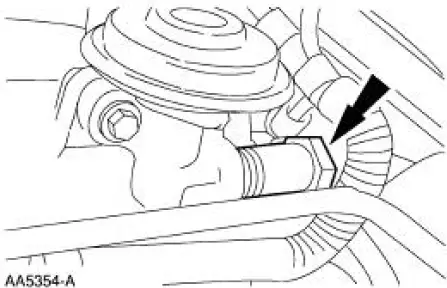
3. With the vehicle in NEUTRAL, position it on a hoist.
4. Disconnect the EGR tube from the exhaust manifold.
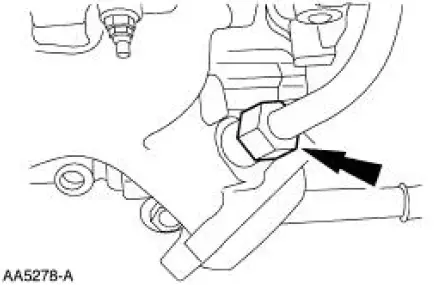
5. Disconnect the hoses and remove the tube from the vehicle.
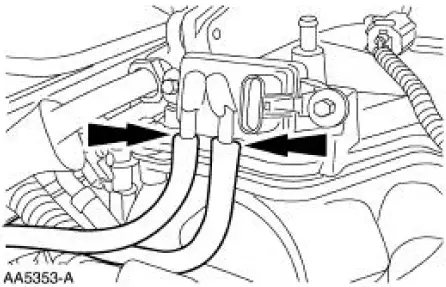
Installation
1. To install, reverse the removal procedure.
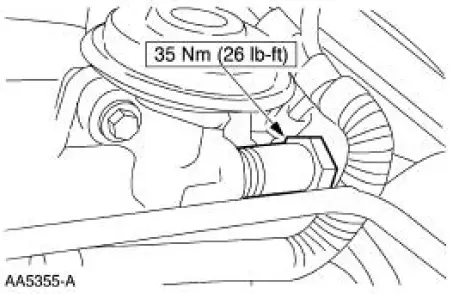
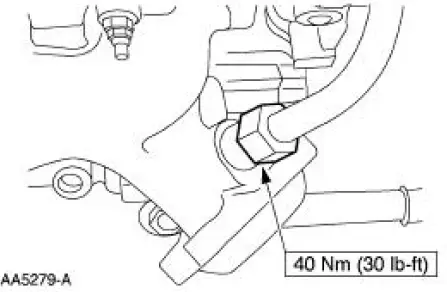
 Exhaust Manifold to Exhaust Gas Recirculation (EGR)
Valve Tube - Cobra
Exhaust Manifold to Exhaust Gas Recirculation (EGR)
Valve Tube - Cobra
Removal and Installation
1. Remove the EGR valve. For addditional information, refer to Exhaust
Gas Recirculation (EGR)
Valve-Cobra in this section.
2. With the vehicle in NEUTRAL, position it on ...
 Differential Pressure Feedback Exhaust Gas Recirculation
(EGR) System
Differential Pressure Feedback Exhaust Gas Recirculation
(EGR) System
Removal and Installation
1. NOTE: The 4.6L (2V) is shown. The 4.6L (4V) and 3.8L are
similar.
NOTE: Bolts may be used in place of nuts on some applications.
Remove the differential pressure fee ...
Other materials:
Removal
CAUTION: Suspension fasteners are critical parts because they affect
performance of vital
components and systems and their failure can result in major service expense. A
new part with
the same part number must be installed if installation becomes necessary. ...
Inspection and Assembly Requirements - Following an
A/C
Compressor Failure
CAUTION: To prevent refrigerant system contamination and possible
failure of the new
A/C compressor, carry out the following procedures.
1. NOTE: A dirty A/C evaporator core orifice or a condenser to
evaporator tube containing black
refrigerant oil and parti ...
Vibration When Brakes are Applied
For vibration concerns when brakes are applied, perform the following
procedure.
Visually inspect:
tire condition and pressure.
suspension bushings and ball joints.
Correct as necessary.
1. Verify and isolate the concern. Brake roughness can be felt in: ...
